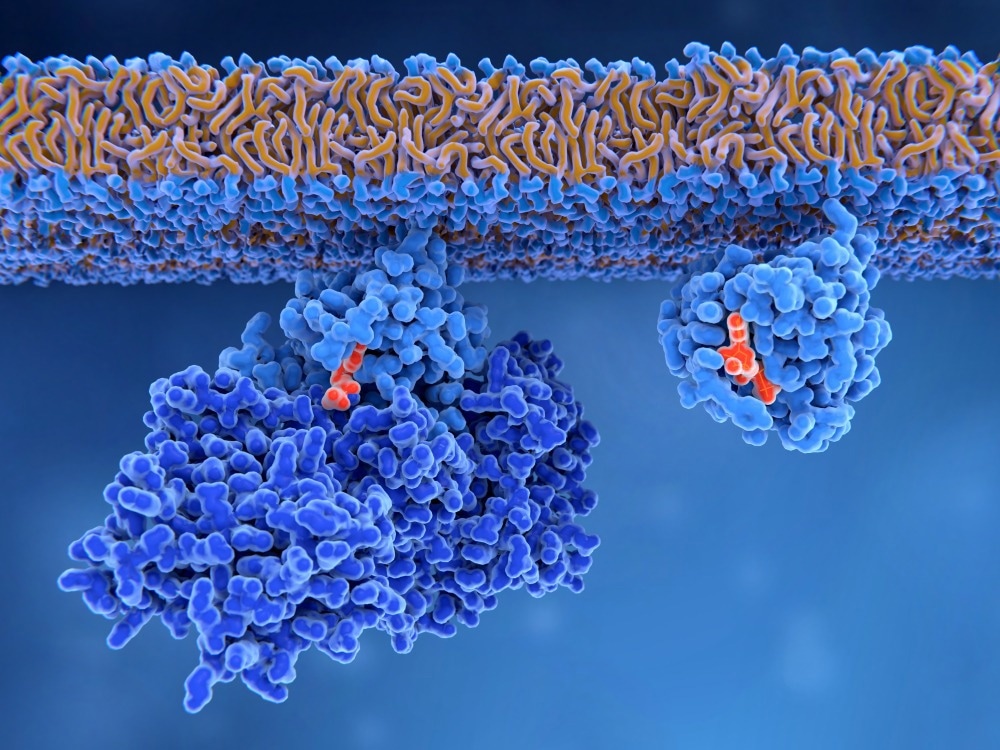Understanding cancer targets
Targeted therapeutics
Challenges in drugging cancer targets
Addressing these challenges
Future directions
References
Further reading
The term 'undruggable' refers to proteins or targets that are challenging to target with conventional drugs. In recent years, researchers have made progress in developing drugs that can interact with these proteins, meaning terms such as 'difficult to drug' or 'yet to be drugged' may be more suitable.

Image Credit: Kim JinKwon/Shutterstock.com
Understanding cancer targets
Due to advancements in genomics and proteomics, scientists have gained a much deeper understanding of the mechanisms behind cancer development. Mutated genes and abnormal proteins have become the foundation for developing anti-cancer drugs.
Scientists have pinpointed specific molecules and pathways that drive cancer growth. These cancer targets can include proteins and enzymes that play imperative roles in promoting tumor proliferation, angiogenesis, and metastasis.
One prominent example of a druggable cancer target is the epidermal growth receptor (EGFR), which has been successfully targeted in several cancers, including certain types of lung and breast cancers.
Proteins like BRAF, HER2, and VEGF have also become targets of various cancer therapies.
Targeted therapeutics
Targeted therapies have brought about a significant transformation in cancer treatment strategies. Unlike traditional chemotherapy, which harms both cancer and healthy cells alike, targeted therapies are specially designed to interact with the unique characteristics of cancer cells. This approach aims to minimize damage to healthy cells, reducing the severe side effects often associated with conventional treatments.
The development of targeted therapies involves a precise and thorough drug discovery and validation process.
Scientists utilize high-throughput screening and computational methods to identify potential drug candidates. These candidates then undergo rigorous preclinical testing before advancing to clinical trials, ensuring that only the most promising therapies are considered for cancer patients.
Among the targeted therapies, immunotherapies have gained significant attention in recent times. These drugs harness the body's immune system to fight cancer. Notably, immune checkpoint inhibitors have shown impressive effectiveness in some cancer patients, especially those with advanced or metastatic disease.
However, challenges persist, such as immune resistance and the need to identify suitable biomarkers for selecting the most appropriate treatments for individual patients.
Challenges in drugging cancer targets
The search for effective therapies for undruggable cancer targets has encountered historical obstacles that have hindered progress.
Certain targets in cancer cells are challenging to develop drugs for. Two main groups of these difficult targets are transcription factors and the RAS family of proteins.

Image Credit: Juan Gaertner/Shutterstock.com
Transcription factors are proteins that control the activity of genes, and some of them, including MYC, MYB, and NF-kB, play a fundamental part in how cancer cells grow and develop.
These proteins are hard to target with drugs because they are located inside the cells, often in the nucleus, and they work together with many other molecules to control gene activity.
The RAS family of proteins, which are like molecular switches that regulate various signals in cells, are another challenging group of targets. Some RAS proteins are frequently mutated in human cancers, including KRAS, NRAS, and HRAS.
It is not the specific proteins that are difficult to target. Due to there being over 100 related proteins in the RAS superfamily, finding drugs that can target all of them is a challenge.
Other historical challenges impeding the development of effective therapeutic treatments for cancer include resistance mechanisms, delivery to intracellular targets, and protein structure complexity.
Addressing these challenges
Continued technological advancements have expanded our understanding of the molecular complexities of cancer cells and provided innovative tools for drug discovery. One prominent technological advancement is the use of fragment-based drug discovery (FBDD).
FBDD is a cutting-edge approach used in drug discovery to target difficult-to-drug proteins, including undruggable cancer targets. Unlike traditional high-throughput screening of large drug libraries, FBDD focuses on identifying small molecular fragments that can bind to specific regions of the target protein. These fragments are smaller and simpler compared to typical drug molecules.
One successful example of FBDD in targeting an 'undruggable' cancer target is Vemurafenib, a drug used to treat melanoma.
Vemurafenib specifically targets the mutated form of BRAF, a protein involved in the MAPK signaling pathway. The protein was considered challenging to drug due to its complex structure and the lack of suitable binding sites.
Another key approach to tackle the challenges in undruggable targets is alternative drug modalities. For example, peptide-based therapies, such as peptide stapling, can target flat and extended protein surfaces that are difficult to reach with traditional small molecules.
Future directions
Scientists are using two new innovative approaches: peptide stapling and fragment-based drug discovery. These methods help target the specific parts of cancer-causing proteins that drive the disease.
By focusing on proteins called BCL-2 that are crucial for cancer growth, these technologies show promise in developing effective treatments for human cancer.
Peptide stapling is a cutting-edge technique used to stabilize and enhance the properties of short protein fragments called peptides. It involves introducing chemical modifications that 'staple' or cross-link specific regions of the peptide together, making the peptide more rigid and stable.
Using peptide stapling, scientists can stabilize peptides that specifically target BCL-2. By introducing cross-links or 'staples' to the peptide, its structure is enhanced, making it more stable and resistant to degradation. This stapled peptide can effectively bind to BCL-2.
Drugging cancer targets represents a compelling approach in the fight against cancer. By understanding the intricacies of cancer biology, researchers have identified specific targets that allow for more effective and tailored treatments. While challenges persist, ongoing research and collaboration offer hope for overcoming obstacles and advancing cancer therapeutics.
References
- Dang, C.V., Reddy, E.P., Shokat, K.M. and Soucek, L. (2017). Drugging the 'undruggable' cancer targets. Nature Reviews Cancer, [online] 17(8), pp.502–508. doi:https://doi.org/10.1038/nrc.2017.36.
- Li, Q. (2020). Application of Fragment-Based Drug Discovery to Versatile Targets. Frontiers in Molecular Biosciences, 7. doi:https://doi.org/10.3389/fmolb.2020.00180.
- Verdine, G.L. and Walensky, L.D. (2007). The Challenge of Drugging Undruggable Targets in Cancer: Lessons Learned from Targeting BCL-2 Family Members. Clinical Cancer Research, 13(24), pp.7264–7270. doi:https://doi.org/10.1158/1078-0432.ccr-07-2184.
Further Reading